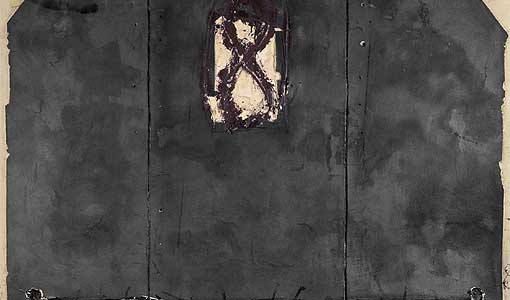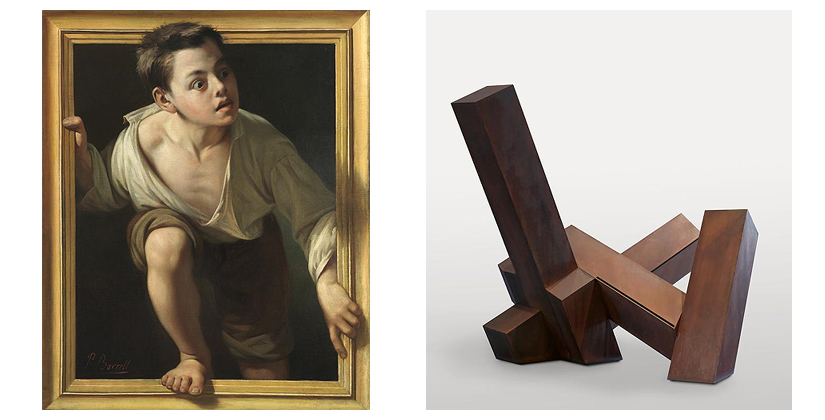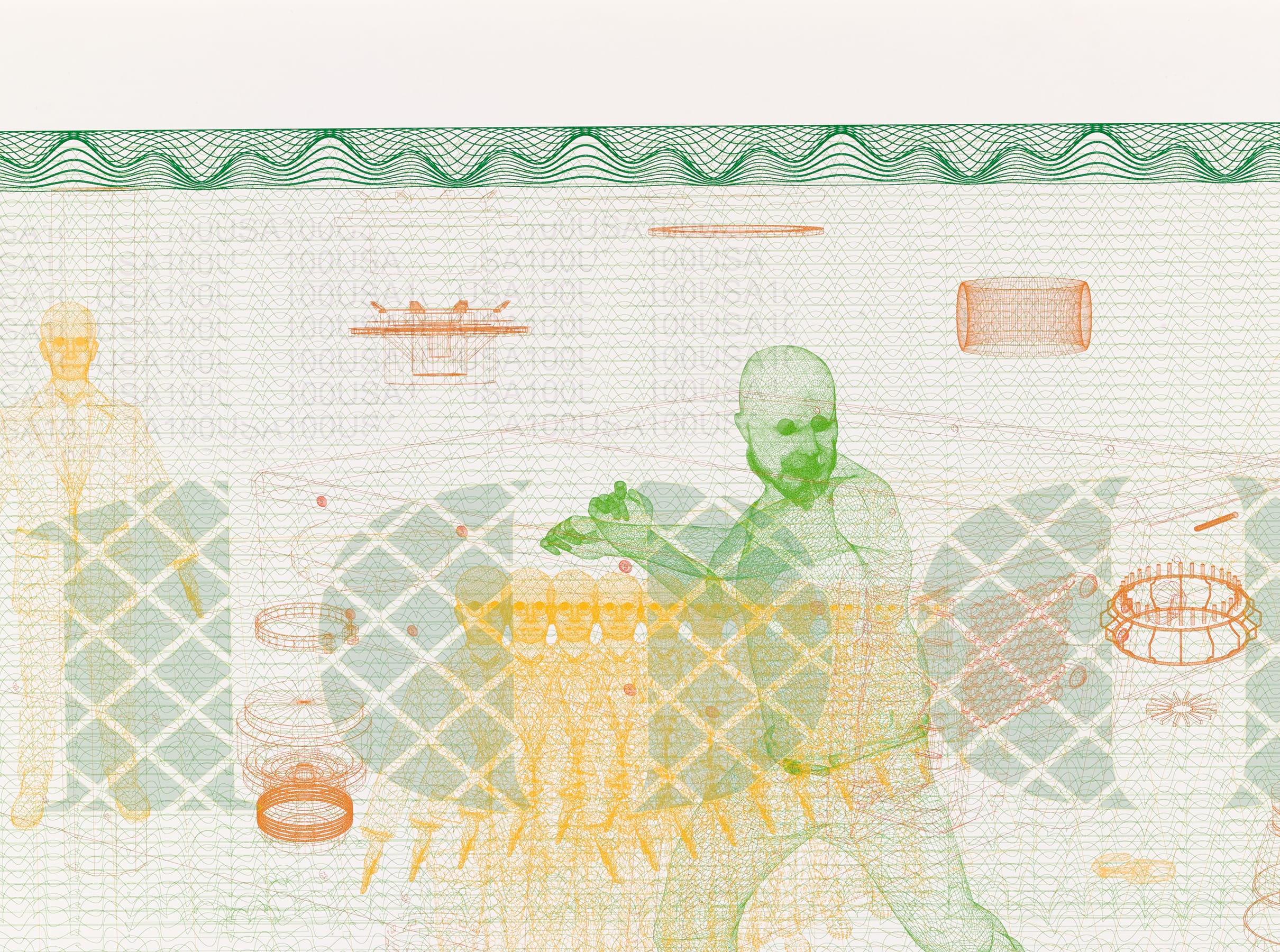
Banco de España Collection in 'El Cultural'
The El Cultura![]() l colour supplement is to publish an article on the upcoming public presentation of the art collection that the Banco de España has built up since it commenced operations in the late 18th century. Yolanda Romero, head curator of the Collection, takes the reporters through the galleries, offices and warehouses of the bank and picks out six key works from different periods. An outline of the article appears below. To read it in full, follow this link
l colour supplement is to publish an article on the upcoming public presentation of the art collection that the Banco de España has built up since it commenced operations in the late 18th century. Yolanda Romero, head curator of the Collection, takes the reporters through the galleries, offices and warehouses of the bank and picks out six key works from different periods. An outline of the article appears below. To read it in full, follow this link![]() .
.
The Banco de España's central headquarters building is packed with cultural and architectural gems, from its grand staircase in Carrara marble to some of the most important Art Deco stained glass work in Europe, plus an art collection numbering over 4500 works and featuring a permanent display of eight paintings by Goya.
Yolanda Romero explains that the collection has been built up over two hundred years. Its origins date back to works commissioned by the Banco de San Carlos, which was founded in 1782 at the height of the Enlightenment. The artists called upon included Francisco de Goya and Salvador Maella. The collection expanded in the early 19th century, when the institution evolved first into the Banco de San Fernando and then, in 1856, merged with the Banco Isabel II to form the Banco de España.
 Escaping Criticism (Something that Cannot Be or Boy Leaving the Painting), by Pere Borrell del Caso and In Praise of Discontent by Eduardo Chillida, two works from the Banco de España Collection
Escaping Criticism (Something that Cannot Be or Boy Leaving the Painting), by Pere Borrell del Caso and In Praise of Discontent by Eduardo Chillida, two works from the Banco de España Collection
The oldest piece in the collection dates from the 15th century: a panel showing a religious scene by the studio of Pedro Berruguete. The latest acquisitions include works by Sandra Gamarra, Belén Rodríguez and Asier Mendizabal. The collection can be divided into two main blocks, one comprising works from before the end of the 19th century and the other contemporary works mostly produced since the 1950s. The list of names in this second block is extensive: Art & Language, Helena Almeida, Txomin Badiola, Miquel Barceló, Eduardo Chillida, Luis Gordillo, Rogelio López Cuenca, Manolo Millares, Pablo Palazuelo, Pedro G. Romero, Soledad Sevilla, Antoni Tàpies, Wolfgang Tillmans and more. They can all be found in the latest edition of the catalogue (three volumes listing over 1400 works by around 500 artists) and in the Collection section of this website.
A museum at the office
The décor at the bank’s central offices adjacent to Madrid's iconic Plaza de Cibeles showcases the good use to which it has put its resources. The library is an architectural marvel of iron and glass. As they enter it, visitors are met by a canvas by Jonathan Monk, but this is not the only work of art there: the walls of the reading room are decorated with paintings by Elena Asins, Alicia Martín, a stainless steel sculpture by Blanca Muñoz and a collage by Sara Ramo.
Ninety per centr of the Collection is divided between the central headquarters building at Plaza de Cibeles, the secondary headquarters at Calle Alcalá 522 and the 15 regional offices across the country. The bank is currently preparing the Chaflán Hall in its building at Cibeles for use as a gallery, and a separate street entrance is to be opened up in the coming months. This gallery will be home to a permanent programme of exhibitions, thus providing art lovers with another venue worth visiting on Paseo del Prado.
The first exhibition scheduled there is Goya and the Origins of the Banco de España Collection, which is to be curated by Yolanda Romero and Manuela Mena. It will focus on the origins of the collection and will feature Goya's portraits of bank personages, paintings by other artists including Maella, Federico de Madrazo and Antonio María Esquivel, plus documents, books and other objects.
From the outset, the collection has been driven by a desire to support contemporary artists. From its earliest days right up to the present, this has resulted in specific commissions linked to the operations of the bank itself. Recent examples include works by Cristina Lucas, Candida Höfer, Ignasi Aballí, Jorge Ribalta and Daniel García Andújar.
As work on the new gallery continues, the bank is already planning further exhibitions. The exhibition on the origins of the collection will be followed by one dedicated to architect Eduardo Adaro![]() , who co-designed the central headquarters with Severiano Sainz de la Lastra
, who co-designed the central headquarters with Severiano Sainz de la Lastra![]() . The Banco de España Collection is thus set to open to the public.
. The Banco de España Collection is thus set to open to the public.
The six key works selected by Yolanda Romero for the article in El Cultural are these:
- Francisco de Goya: Don Francisco de Cabarrús y Lalanne, Future Count of Cabarrús, 1788
- Vicente López Portaña: King Ferdinand VII of Spain, 1832
- Pere Borrell del Caso: Escaping Criticism (Something that Cannot Be or Boy Leaving the Picture), 1874
- Meumejean: Art deco stained glass, H. 1935
- Jorge Oteiza: In Praise of Discontent, 1991
- Candida Höfer: Banco de España, Madrid III, 2000
